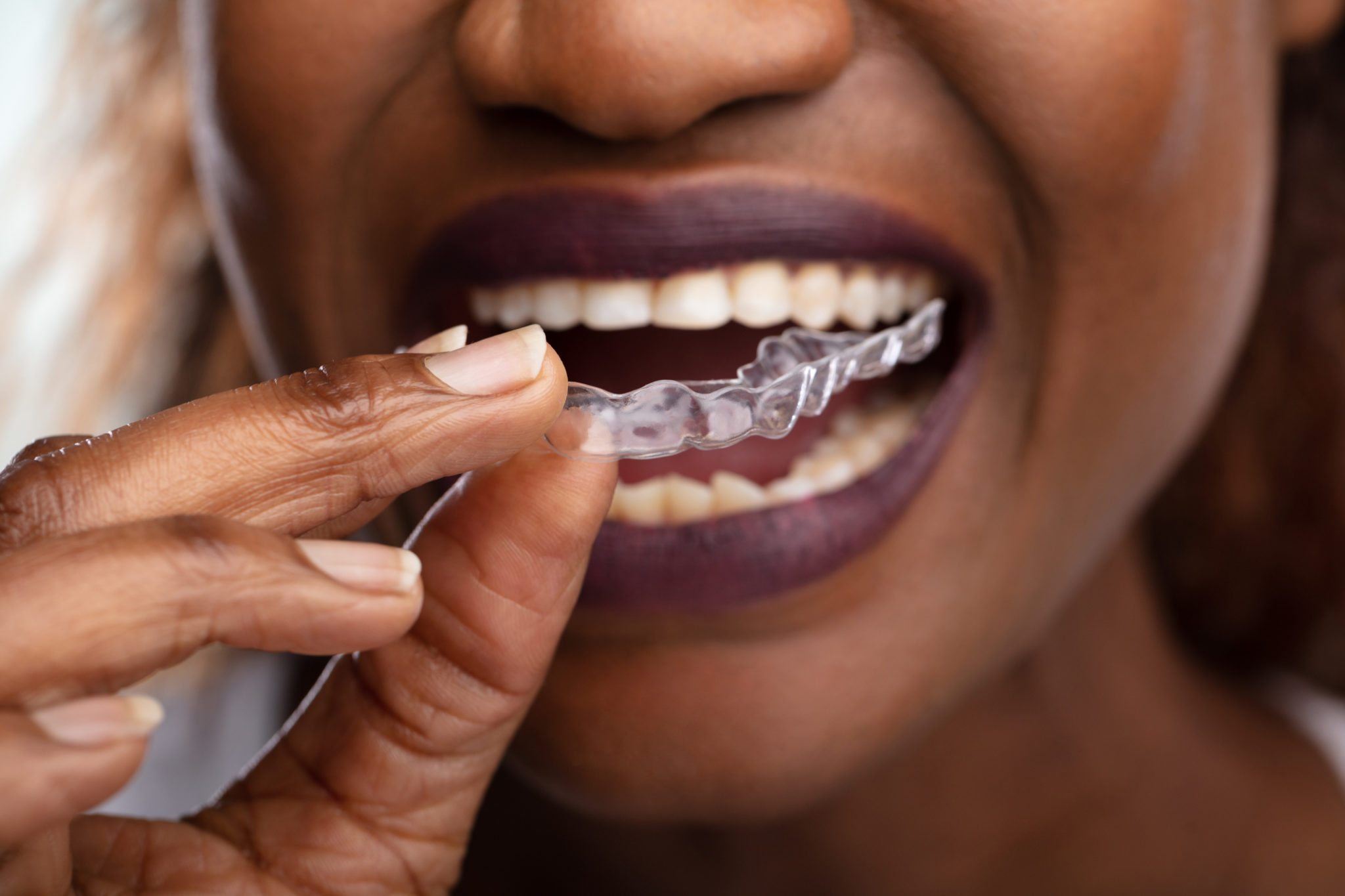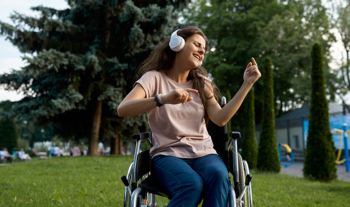In an increasingly connected world, access to care should be on the rise. However, according to the American Dental Association (ADA), the majority of the U.S. population doesn’t receive dental care at all. In fact, visits to dental offices started to drop in 2003[i] and have been declining ever since.
With 40% of Americans lacking dental insurance[ii], the cost of care is largely prohibitive. This is even more prominent when it comes to orthodontic care which is more expensive than general oral healthcare.
Unfortunately, it is often is not covered as an essential health benefit even for those who do have health insurance. Combined with 60% of U.S. counties lacking any orthodontist offices[iii], access to teeth straightening is prohibitive if not impossible for many Americans.
The good news is that teledentistry is changing that. Remote teeth straightening companies are helping open up the world of straighter teeth for those who previously couldn’t afford it or had no way of physically getting to an orthodontist.
Understanding Teledentistry
What is teledentistry? In short, it’s the use of technology for remote dental care, It is a subset of telemedicine. And telemedicine is nothing new. The American Telemedicine Association was first established in 1993.[iv]
In 2015, the American Dental Association defined teledentistry more broadly as: “the use of telehealth systems and methodologies in dentistry. Telehealth refers to a broad variety of technologies and tactics to deliver virtual medical, health, and education services. Telehealth is not a specific service, but a collection of means to enhance care and education delivery.”[v]
Of course, the ability to employ teledentistry technologies depends largely on the legal and regulatory environment in each individual state. Many states already have a definition in law, including terms for “telemedicine” or “telehealth” services. Within dentistry, local dental boards play a large part as well.
Teledentistry comes in different forms
In practice, teledentistry can range from data sharing between patients and providers to actual remote treatment, like teeth straightening. There are already apps available that push preventative procedure reminders to patients and some providers are actively using real-time video conferencing for oral pathology evaluation.
In the U.S., some insurance coverage now includes teledentistry treatments. One six-year study in California found “virtual dental homes”—a community-based system that uses telehealth—to be safe and effective for oral health care.[vi]
Related content: How to Integrate Teledentistry Into Your Practice
Not only does this provide a solution for places without physical locations for care, but the average cost of doctor-directed teledentistry treatment is less expensive than in-office care. This makes a huge difference for those who lack dental insurance.
Is Teledentistry Safe for Teeth Straightening?
It’s been estimated that 300 million people worldwide[vii] could benefit from straightening their teeth. However, they are unlikely to seek treatment through a doctor’s office. This raises the question of whether teeth straightening can be done safely via telemedicine?
The answer is yes. Teledentistry companies are making it both safe and easy for people to straighten their teeth at home because they provide oversight by licensed dentists or orthodontists. These oral health professionals are committed to bringing teeth straightening to people who previously couldn’t access it. It is important to point out that these types of at-home invisible aligners are not do-it-yourself (DIY) programs. Rather, they are a branch of teledentistry.
The “social six”
When it comes to malocclusion—improperly aligned teeth—98% of patients are treatable via teledentistry methods, such as invisible aligners.[viii] This is in part because the vast majority of treatments are for straightening what’s called the “social six.”
These are the visible front teeth that, in mild to moderate cases, do not affect any major medical conditions. That is why most third-party payers (like insurance companies) view the movement of these teeth as cosmetic and not an essential health benefit.
At least 19 states[ix] have adopted policies related to teledentistry offering oral health services remotely. More are in the works because many licensed dentists and orthodontists are beginning to work with remote invisible aligner solutions. They oversee cases in order to increase overall access to care.
How Does Remote Teeth Straightening Work?
The process starts with an at-home impression kit and evaluation. Patients follow step-by-step instructions to take molds of their own teeth. This is similar to what they would do in office for invisible aligner treatment. These molds are then submitted along with photos of their teeth using the same angles a dentist or orthodontist would capture in-office.
A licensed dentist or orthodontist then evaluates both the photos and the impressions to determine if the patient is a candidate for remote therapy. If so, they’ll create a treatment plan for moving the teeth. If not, the patient can be referred to a physical orthodontic office for treatment that corrects major medical conditions rather than the more cosmetic movement that invisible aligners treat.
Once patients are approved for remote therapy, their aligners are custom-made and mailed to them. Throughout the course of treatment, the patients switch out their aligners as directed by their physician-approved treatment plan.
High-frequency vibration
Orthodontists have used adjunctive high-frequency vibration (HFV) therapy in their offices for many years. HFV involves transmitting soft micro pulses through the roots of the teeth to the surrounding bone.
An August 2019 study, published in the Journal of Orthodontic Science prospectively examined the outcomes of thirty orthodontia patients who had minimum to moderate crowding of their teeth treated with clear aligners and adjunctive HFV. Their outcomes were compared to a control group that used aligners but did not receive HFV.
The study found the treatment time of the HFV-treated patients was shorter than the control group. The average time to aligner change was 5.2 days in the HFV group vs. 8.7 days in the control group (P=0.0001). The HFV group also had a significantly improved bone density compared to controls.
Although this study was done in patients receiving traditional in-office orthodontia, it is possible to deliver HFV to patients being treated remotely. My company, byte*, accomplishes this via the use of a proprietary device that we call the Hyperbyte. The safety and efficacy of HFV used in a remote setting have not yet been studied.
Are people happy with the results of at-home teeth straightening?
Thousands of people have already been treated with doctor-directed at-home teeth straightening. However, because remote orthodontics is relatively new, there are not yet any large-scale studies that demonstrate safety and efficacy compared to traditional in-office treatment. However, there are some things that we do know:
- A 2018 systematic review of the research evidence for the benefits of teledentistry found “emerging” evidence suggesting that teledentistry, including orthodontics, appears to be effective and cost-effective.
- A recent review of telehealth by the Agency for Healthcare Quality and Research concluded that “in general, the evidence indicates that telehealth consultations are effective in improving outcomes or providing services, with no difference in outcomes.”
- The benefits of a straighter smile can help people feel more confident and get rid of insecurities, improving their overall quality of life.[xiv]
Additional Content on Oral Care:
What Does Fluoride Actually Do for Your Oral Health?
The Water Flosser: A Great Alternative for Floss Haters
Many Surprising Reasons to See an Orthodontist
The future of dental care?
The U.S. Department of Health and Human Services estimates there will be a shortage of dental professionals by 2025[xv]. Teledentistry can help lessen the impact of that shift. Even now remote options are already increasing access to care by bringing solutions to communities—both geographically and economically—that don’t have orthodontic care readily available.
Many health delivery organizations (75%) are already using telehealth solutions or plan to use them in the near future.[xvi] It’s only natural that teledentistry should be a part of this growing adoption of remote care.
***
**Love our content? Want more stories about Oral Health, Orthodontics, and Dental Cosmetics? SIGN UP FOR OUR WEEKLY NEWSLETTER HERE**
***
References
[i] https://www.americanteledentistry.org/facts-about-teledentistry/
[ii] https://www.dentistryiq.com/practice-management/patient-relationships/article/16350580/survey-reveals-americans-view-dental-care-as-nice-to-have-would-repair-their-cars-over-their-teeth
[iii] https://dentistrytoday.com/news/todays-dental-news/item/3497-teledentistry-provides-orthodontic-treatment-to-those-without-access-to-care
[iv] https://orthopundit.com/diy-medicine/
[v]https://www.dental.pacific.edu/documents/departments/pcsc/DQ_WhitePaper_Telehealth_081816.pdf
[vi] https://www.dentistrytoday.com/news/todays-dental-news/item/3848-teledentistry-virtual-care-for-urgent-oral-health-and-dental-problems
[vii] https://www.usatoday.com/story/money/2018/12/21/invisalign-smile-direct-club-braces-teeth-aligners/2378959002/
[viii] httpss://www.americanteledentistry.org/wp-content/uploads/2018/07/ProOrtho_2018_Q3-2.pdf
[ix] https://www.ncsl.org/research/health/oral-health-care-in-rural-america.aspx
[xiii] https://www.corvel.com/blog/telehealth-the-wait-is-over
[xiv] https://www.orthodonticslimited.com/teeth/straight-teeth-affects-confidence/
[xv] https://www.orthodonticslimited.com/teeth/straight-teeth-affects-confidence/
[xvi] https://blog.vidyo.com/telemedicine/2018-year-telemedicine-becomes-medicine/
*Financial disclosure: Dr. Marashi is the Co-Founder and Chief Cosmetic Dentist at byte.
Jon Marashi, DDS
Website:
http://www.drmarashi.com/
Dr. Jon Marashi excels in artistic dental restoration that is highly customized to meet the needs of his patients.
Dr. Marashi graduated from the Honors Aesthetic Dentistry program at New York University College of Dentistry, where he would later become a Clinical Instructor in Aesthetic Advantage. He also served as Clinical Program Director at California Center for Advanced Dental Studies and as a Clinical Consultant to a major dental manufacturer, where he advised on the development of new products and materials. Dr. Jon Marashi is also the Chief Cosmetic Dentist at byte which is the only invisible aligner company that analyzes your facial symmetry to better fit your smile to your face. The "Smile Science" is byte's technology and process that was engineered and is practiced by Dr. Marashi.
He believes that confidence, success, health, and happiness can be expressed with the radiance of a smile, and strives to ensure his patients express their best inner-selves with each and every smile. Not only has smiling been linked to improved health and mood, but it is also the first step in determining how one comes across in the world.
Dr. Marashi serves as one of the founding board members of Learning Lab Ventures, an organization that transforms children’s lives and disrupts generational poverty through intensive after-school education and enrichment.
When he’s not crafting the perfect smile, Dr. Marashi can often be found cruising along the streets of Los Angeles, where he’s endearingly known as the “skateboarding dentist.”
Comments:
Leave a Reply
Comment will held for moderation









We agree. This is a great addition to the current telemedicine offerings. With how easy and accessible telemedicine is becoming, be prepared for more and more ways that healthcare will come directly to your home. We recently interviewed Walgreens on their telemedicine app, Find Care, and I was shocked at how easy it was to receive digital healthcare AND they will deliver any prescriptions directly to your home. With only 1 in 10 Americans using telemedicine, we need to raise awareness about how accessible it is; Especially for rural Americans who have trouble accessing healthcare or folks that are travelling and need a realiable way to connect with a doctor.
Our YouTube video with Walgreens will publish on Tuesday; please check it out and subscribe to our channel.
This is a giant stride in dentistry. I hope more work is done and there is a general acceptance of this technology